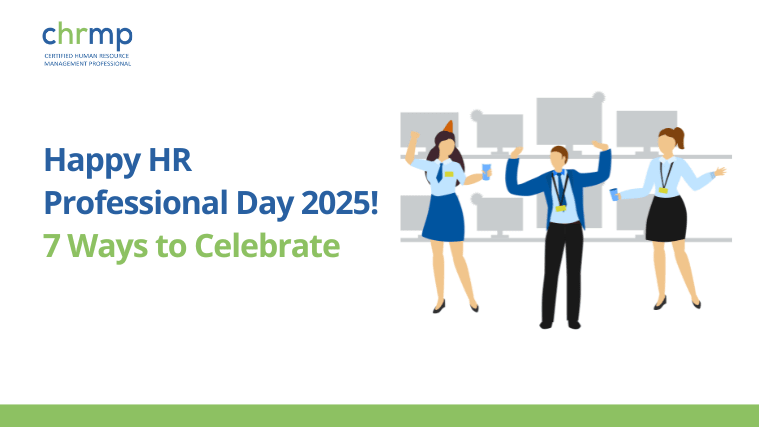
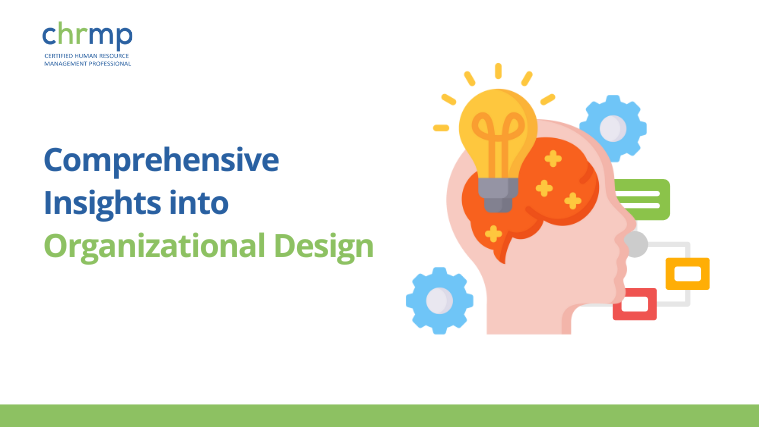
Imagine walking into a beautifully constructed building with no blueprint — rooms are randomly placed, hallways don’t connect logically, and no one knows where anything is. That’s what an organization without a well-thought-out design can feel like.
At its core, organizational design is a systematic approach to structuring how a company operates. It defines how tasks are divided, who reports to whom, how teams collaborate, and how resources are allocated to meet business objectives. It’s not just about boxes on an org chart; it’s about creating a structure that supports the company’s mission, strategy, and culture.
Unlike static organizational charts, modern organizational design is dynamic. It considers real-time business needs, industry trends, customer expectations, and workforce capabilities. It ensures that every part of the organization — from frontline staff to senior leadership — is strategically aligned.
The right organizational structure enables a business to:
Organizational design isn’t a one-time project. It evolves with your business. As your strategy shifts — perhaps to enter new markets, introduce new products, or adopt new technologies — your organizational structure must shift with it.
A truly impactful organizational design aligns three critical pillars:
Example: A SaaS company expanding to global markets needed to rethink its organizational design. By shifting from a function-based to a region-based structure, aligning CRM tools with time zones and customer behaviors, and empowering regional managers, the company achieved 30% faster decision-making and boosted client satisfaction globally.
Also Read: Divisional Organizational Structure
While organizational design might sound like the realm of CEOs and consultants, HR is at the very heart of it. HR professionals are uniquely positioned to understand both the business strategy and the people who execute it — making them essential players in designing a structure that works.
HR’s Role in Driving Design Initiatives
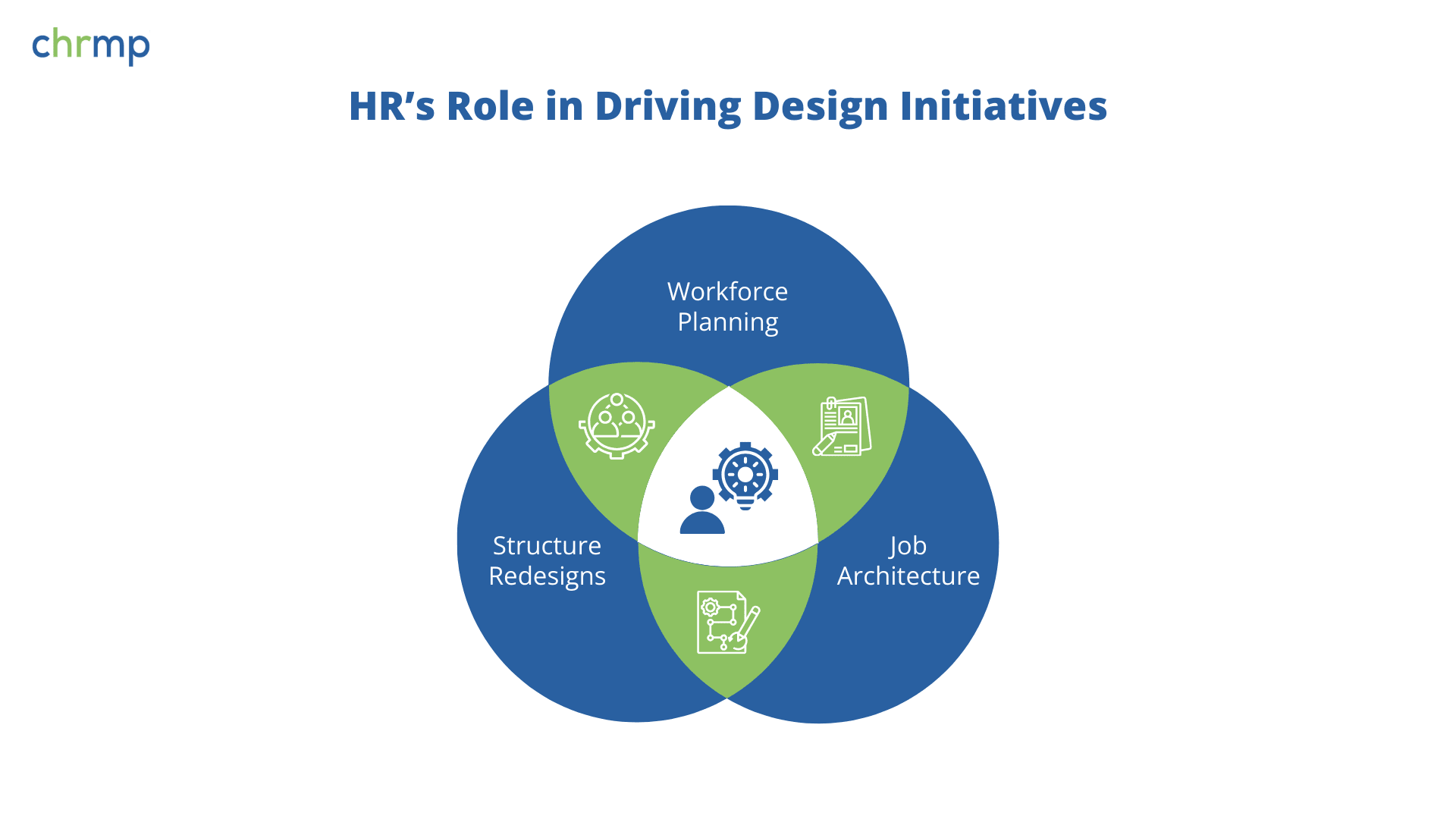
HR doesn’t just fill roles — it designs the framework in which people work.
Here’s how HR contributes to organizational design:
Job Architecture: Defining and standardizing job roles, levels, and compensation bands across the organization.
Cultural Alignment: Structure and culture go hand-in-hand. A design that promotes transparency, for instance, will fall flat if the culture discourages speaking up. HR ensures the design reinforces — rather than contradicts — the organization’s values.
A successful organizational design requires tight alignment between HR and business leaders. HR acts as a strategic advisor, helping leaders understand:
Example: When a fast-growing fintech company expanded from 50 to 200 employees, HR worked closely with the C-suite to shift from a flat structure to a matrix model. HR led competency workshops, designed new job levels, and introduced a leadership training program. The result? Clearer decision-making, faster onboarding, and a 15% increase in employee engagement.
A well-designed organization doesn’t happen by accident — it’s built on a strong foundation of core principles that shape how work gets done. Whether you’re creating a new structure from scratch or realigning an existing one, keeping these principles in mind is essential for long-term success.
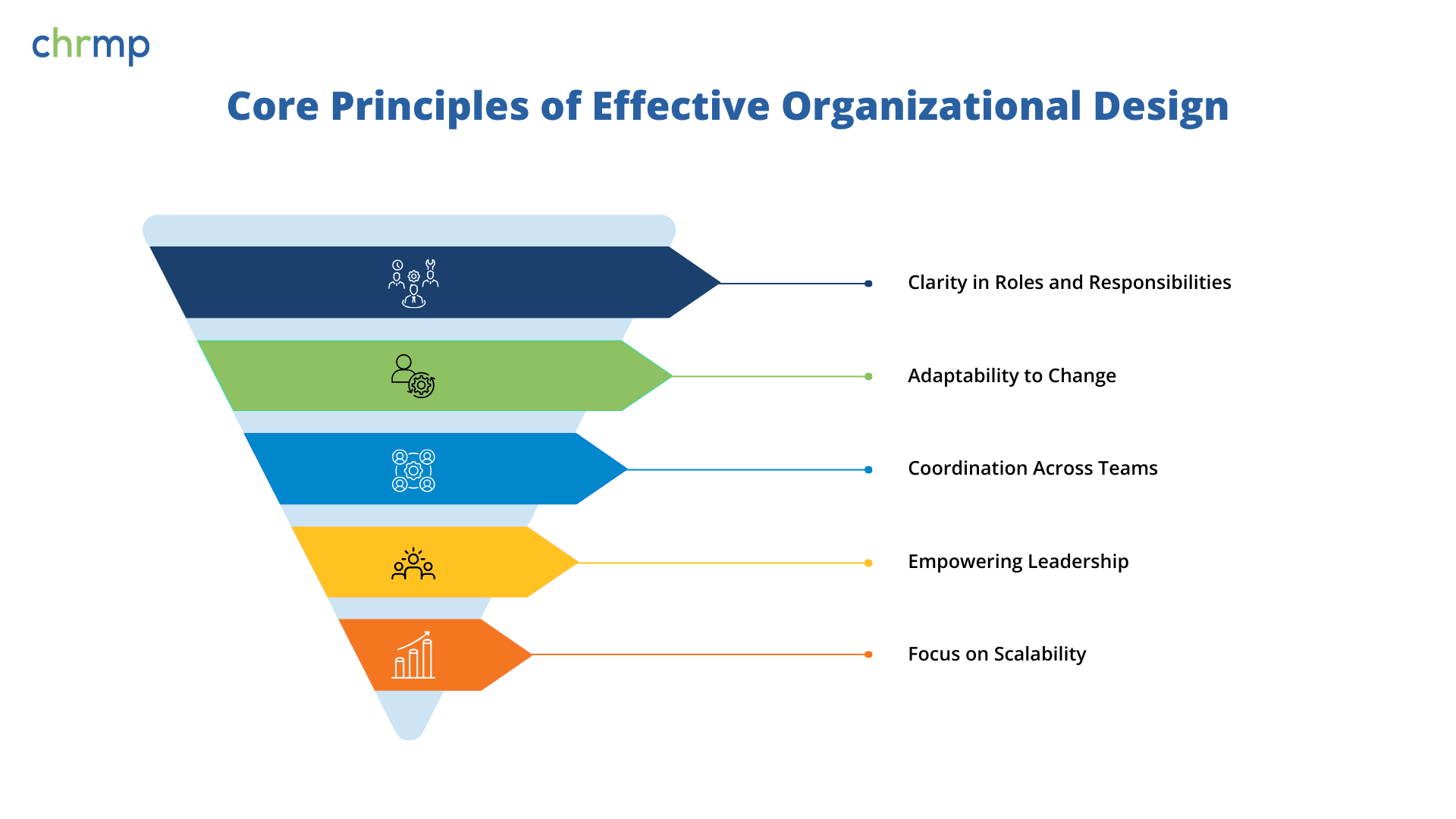
1. Clarity in Roles and Responsibilities
Every employee should know what is expected of them — not just in their job description, but in how their role contributes to team and business goals. This structural clarity prevents overlaps, reduces confusion, and ensures accountability.
Example: In a mid-sized marketing agency, unclear responsibilities between account managers and project managers often led to duplicated client communication. Redefining their roles and boundaries improved client satisfaction and internal efficiency.
2. Adaptability to Change
Markets shift, customer preferences evolve, and new technologies disrupt old models. An effective organizational design is one that’s built to flex and pivot. This doesn’t mean constant restructuring — it means having the agility to reallocate resources and redesign workflows when needed.
Pro Tip: Agile frameworks, like cross-functional teams, allow companies to adapt quickly without dismantling their entire structure.
3. Coordination Across Teams
Silos are the enemy of innovation. When departments operate in isolation, it leads to miscommunication, duplicated efforts, and missed opportunities. Modern organizational design emphasizes workflow optimization by encouraging collaboration across teams and functions.
Example: A retail company integrated its online and offline teams into one “omnichannel experience” unit. This improved customer experience and aligned messaging across platforms.
4. Empowering Leadership
Structure should not stifle leadership — it should enhance it. This means designing hierarchies where decision-making authority is clearly defined, and leaders are empowered to act, guide, and develop their teams.
Key Insight: The goal is to reduce bureaucratic slowdowns and support leaders with the autonomy and resources to drive performance.
5. Focus on Scalability
What works for a startup of 20 won’t work for a scale-up of 200. Effective organizational design considers future growth, ensuring that systems, reporting lines, and job roles can expand without becoming chaotic.
Scalability in Action: A SaaS company anticipating rapid global growth created regional hubs and implemented scalable tools like centralized HRIS and CRM platforms. This allowed them to grow without structural bottlenecks.
Organizational design doesn’t happen in a vacuum. It is shaped — and constantly reshaped — by internal ambitions and external forces. Understanding these influencers is key to creating a structure that’s both strategic and sustainable.
Strategic Vision
Your organization’s strategic objectives are the north star of design. Whether the goal is global expansion, digital transformation, or market leadership, your design should support — not hinder — your path forward.
Example: A healthcare provider aiming to shift to value-based care redesigned its org structure to include patient outcome teams and cross-functional analytics units aligned with patient-centric outcomes.
Technology Integration
Technology is not just a support function — it’s a design driver. The integration of digital tools, automation, AI, and data analytics can redefine how work is structured and delivered.
Practical Impact: A company that adopted workflow automation reduced manual hand-offs, enabling leaner teams and more streamlined processes.
Market and Industry Dynamics
Competitive pressure, economic trends, and regulatory shifts can all influence how an organization must be structured to remain relevant. Being responsive to industry changes ensures resilience and continued performance.
Example: During the pandemic, many traditional firms adopted hybrid work models and restructured their teams to accommodate remote workforces — an adaptation directly influenced by global events.
Employee Capabilities
Design must reflect the skills and strengths of the workforce. Creating roles or structures that employees aren’t ready to fill can create friction and underperformance. HR must assess whether the talent pool supports the intended design — or if development is required.
Case in Point: A tech firm that introduced “product owner” roles had to launch a training program because existing team leads lacked the agile skills required.
Legal and Regulatory Environment
Especially in global organizations, compliance with labor laws, union agreements, and data privacy regulations is non-negotiable. These legal frameworks shape job classifications, reporting structures, and geographic team placements.
Tip: Always consult legal and HR compliance teams when designing roles that cross international or regulatory boundaries.
A thoughtfully crafted organizational design is not just about structure—it’s a catalyst for enhanced decision-making, seamless collaboration, and heightened productivity. When an organization’s framework aligns with its strategic objectives, it creates an environment where employees can thrive and operations run smoothly.
Enhancing Decision-Making
A clear organizational structure delineates authority and responsibility, reducing ambiguity in decision-making processes. When roles are well-defined, employees understand their decision-making boundaries, leading to quicker and more confident choices. For instance, a company that transitioned to a decentralized structure empowered regional managers to make market-specific decisions, resulting in faster responses to local market changes.
Fostering Collaboration
Breaking down silos is a common goal of effective organizational design. By promoting cross-functional teams and open communication channels, organizations can enhance collaboration. For example, integrating marketing and product development teams can lead to products that better meet customer needs, as insights are shared more freely and frequently.
Boosting Productivity
When workflows are optimized and redundancies eliminated, employees can focus on value-adding activities. An organization that restructured its operations to align with core processes reported a significant increase in productivity, as employees spent less time navigating bureaucratic hurdles and more time on their primary tasks.
Metrics to Assess Effectiveness
To gauge the success of organizational design, consider the following performance metrics:
Also Read: What is Organizational Development?
Case Study: Transforming a Consumer Manufacturing Company
Background: A fast-growing consumer manufacturing company with revenues between $400-500 million faced inefficiencies due to an overly complex organizational design. Poor cross-functional visibility led to duplicated efforts and communication breakdowns.
Challenges:
Strategies Implemented:
Outcomes:
This case underscores the importance of aligning organizational design with business objectives and the pivotal role of clear communication and change management in successful transformations.
As the business landscape evolves, so too must organizational structures. Staying abreast of emerging trends ensures that organizations remain agile and competitive.
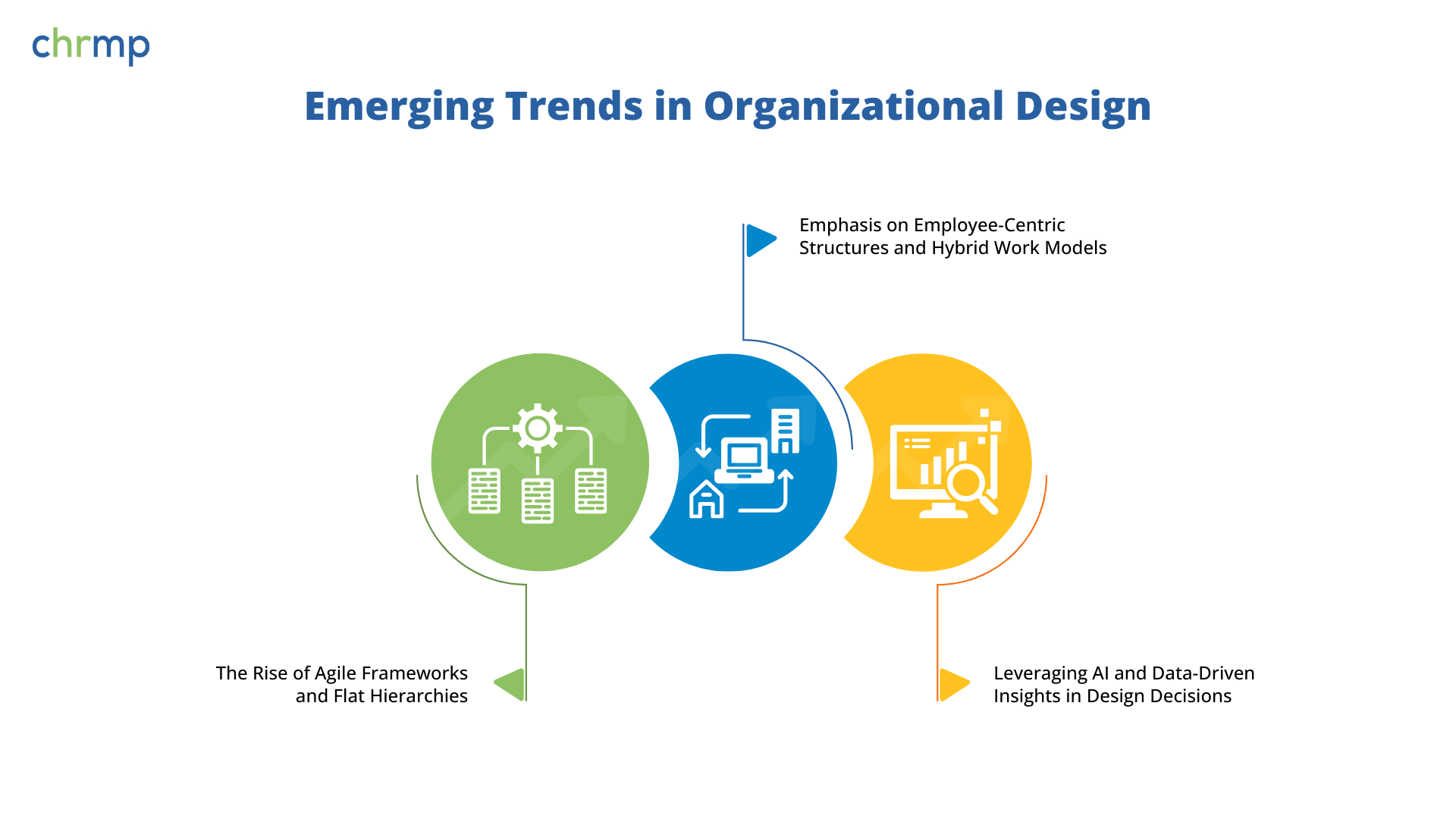
Traditional hierarchical structures are giving way to flatter, more agile frameworks. This shift promotes faster decision-making and increased innovation. Companies adopting flat hierarchies often experience enhanced collaboration and a more empowered workforce. For instance, organizations that have minimized layers of management report quicker responses to market changes and heightened employee engagement.
The pandemic accelerated the adoption of hybrid work models, blending remote and in-office work. Organizations are now designing structures that prioritize employee well-being and flexibility. This approach not only attracts top talent but also leads to higher retention rates. Companies implementing flexible work arrangements have observed increased productivity and job satisfaction among employees.
The integration of artificial intelligence (AI) and data analytics is revolutionizing organizational design. By leveraging data-driven insights, companies can make informed decisions about structuring teams, optimizing workflows, and forecasting future needs. For example, using AI to analyze communication patterns can help identify bottlenecks and inform restructuring efforts to enhance efficiency.
Staying attuned to these trends enables organizations to design structures that are resilient, adaptable, and poised for future success.
By understanding the intricate link between organizational design and effectiveness, learning from real-world applications, and embracing emerging trends, organizations can position themselves for sustained growth and competitiveness in an ever-changing marketplace.
Also Read: Mastering Organizational Structure: A Guide to Building a Successful Business Framework
Organizational design is no longer just a structural blueprint—it’s a powerful strategic tool that can define a company’s ability to innovate, grow, and stay competitive. Whether you’re undergoing a major transformation or fine-tuning your structure, aligning people, processes, and technology with your strategic goals is essential.
HR plays a pivotal role in driving these changes, ensuring that the design not only reflects company vision but also empowers people at every level. From establishing clarity in roles to embracing agile frameworks, effective organizational design enhances decision-making, boosts collaboration, and supports long-term success.
As market dynamics shift and technology evolves, organizations that proactively adapt their design will stay resilient and relevant. By understanding the fundamentals, leveraging analytics, and fostering a culture of adaptability, businesses can create environments where both performance and people thrive.
Remember: The right organizational design is not one-size-fits-all—it’s a dynamic, evolving system built on thoughtful strategy and human insight.
Organizational design is the deliberate process of aligning a company’s structure, roles, processes, and culture with its strategic goals. A well-designed organization improves communication, decision-making, and accountability. It ensures that the right people are in the right roles, doing the right work—maximizing efficiency and driving business growth.
The core goals of organizational design include:
HR is a key driver of organizational design. It ensures alignment between talent strategy and business goals, facilitates change management, defines roles and competencies, and supports the creation of a performance-focused culture. HR also plays a crucial role in gathering workforce data and advising leadership on workforce structure, engagement, and reskilling needs.
Several internal and external factors shape organizational design success:
A well-executed organizational design enhances:
It ensures that every part of the organization is contributing to a common goal, with minimal redundancy and maximum synergy.
Yes. A global FMCG company undergoing digital transformation redesigned its structure to eliminate silos between marketing, product, and IT teams. By introducing cross-functional squads and agile methodologies, the company reduced time-to-market by 40% and improved internal collaboration, which ultimately boosted product innovation and customer satisfaction.
Some common challenges include:
Key trends include:
HR professionals can:
Successful redesign is not just about boxes on a chart—it’s about people, purpose, and adaptability.

© 2007-2025 CHRMP| All Rights Reserved | Powered by Ripples Learning & Research Private Limited
